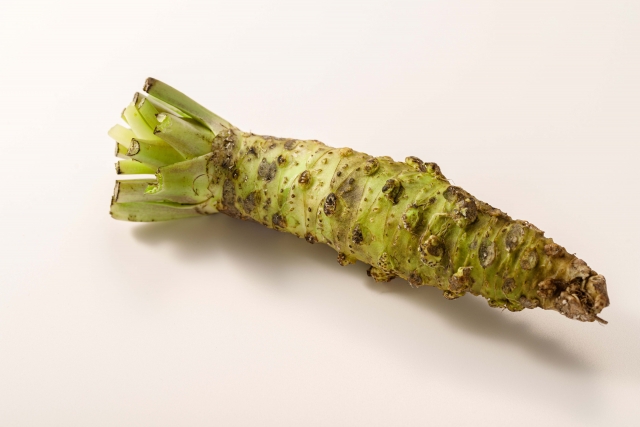Most “wasabi” served around the world—and often even in Japan—isn’t real wasabi. It’s usually a blend of horseradish, mustard, and green coloring designed to imitate the heat and color of the genuine plant.
This guide explains what real wasabi is, why it’s so rare, how it differs from the common substitute, and how you can experience the authentic flavor for yourself.
What Is Real Wasabi?
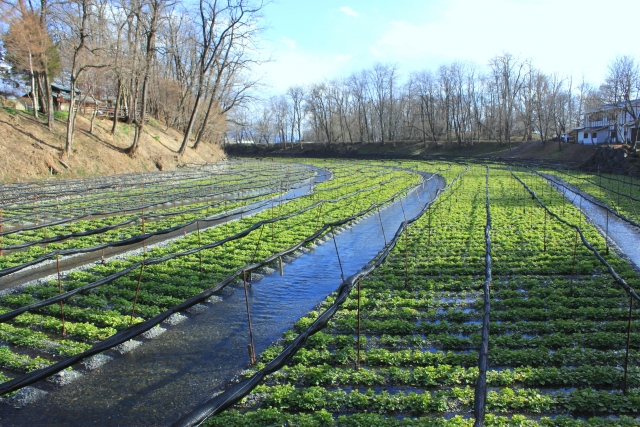
Wasabi fields
Real wasabi, called hon-wasabi (Wasabia japonica), is a perennial plant native to Japan. It thrives in cool, pristine mountain streams where water runs constantly and cleanly.
Because it requires stable temperatures (roughly 13–16°C year-round), steady flow, shade from deciduous trees, and mineral-rich water, cultivation is difficult and site-limited.
The edible part is the rhizome, which is freshly grated right before serving. The flavor is delicate and complex: a bright, nasal heat that rises quickly and then fades, leaving subtle sweetness and earthy green notes.
Unlike chili heat that lingers, wasabi’s pungency is quick and clean.
What Most People Eat: The Common Substitute
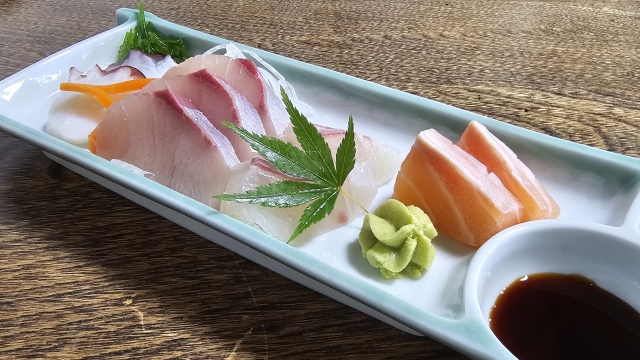
Outside of high-end sushi restaurants, the “wasabi” you meet is usually a substitute made from horseradish (sometimes called “Western wasabi”), mustard, starch, oil, and green coloring. It’s affordable, shelf-stable, and easy to mass-produce, which explains its global spread in supermarkets, casual restaurants, and takeaway packs.
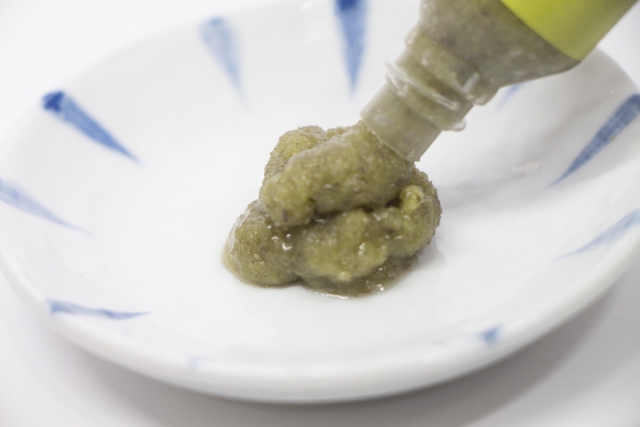
Convenient tube wasabi is also a household staple in Japan.
Many tubes are primarily horseradish-based; some premium products include a portion of real wasabi for aroma, along with stabilizers to maintain texture and color.
Why Real Wasabi Is Rare and Expensive
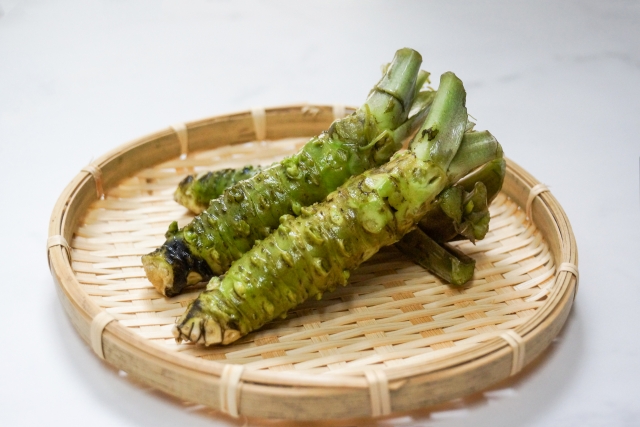
Strict growing conditions: cool, clean running water; narrow temperature range; partial shade; stable climate.
Slow growth: the rhizome typically takes over two years to mature.
Limited regions: only certain valleys and spring-fed farms can sustain it.
Gentle handling: harvest, storage, and transport must minimize damage to preserve freshness and enzymes.
These constraints drive cost up, so authentic wasabi appears mainly in specialty grocers and high-end or traditional sushi restaurants.
Real vs Fake: How Do They Taste Different?
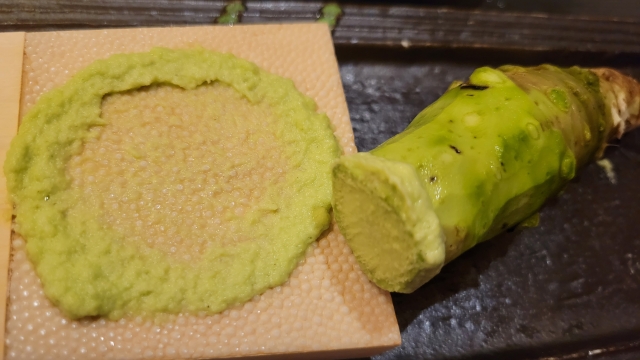
Aroma & heat: Freshly grated real wasabi releases volatile compounds that create a clean, quick heat and fresh green aroma. The intensity rises and then subsides within minutes, allowing the fish or dish to shine.
Horseradish-based substitutes often taste harsher and can linger longer, with a simpler profile.
Mouthfeel: Properly grated real wasabi forms a smooth, slightly viscous cream. Substitutes tend to be pastier or grainier depending on thickeners.
Aftertaste: Real wasabi leaves a brief, sweet echo; substitutes can feel more blunt or one-note.
Health & Food-Safety Notes
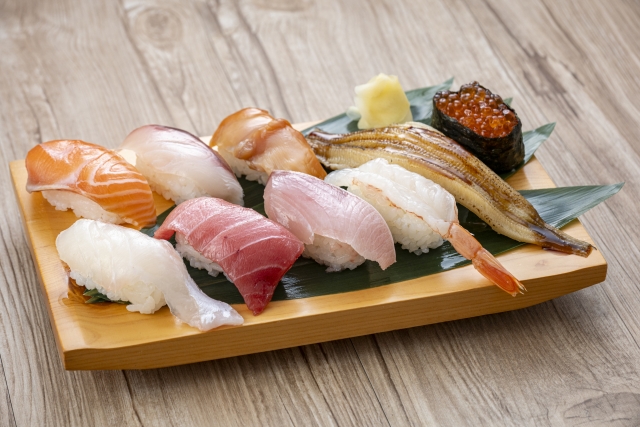
Wasabi’s punch comes largely from allyl isothiocyanate, formed when enzymes act on broken plant cells. This compound contributes to the familiar nose-tingling sensation and is associated with antimicrobial properties.
Historically, sushi chefs valued wasabi for helping counter fishy odors and supporting freshness—one reason it became inseparable from sushi culture.
Wasabi in Everyday Japanese Life
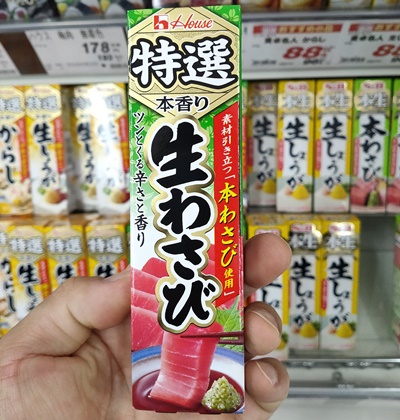
In daily home cooking, convenience wins. Tube wasabi—usually horseradish-based—is inexpensive, easy to store, and perfectly suitable for sushi, sashimi, soba dipping sauces, and quick sauces.
Premium tubes that include real wasabi exist, but they cost more and still contain stabilizers to keep texture consistent.
How to Experience Real Wasabi
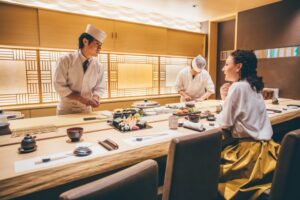
Where to find it: Look for high-end sushi bars, kaiseki restaurants, traditional inns near wasabi-growing regions, or specialty grocers.
If you purchase a fresh rhizome, plan to use it quickly.
How to grate: Gently wash the surface, trim petioles, and grate from the fresher stem end in small circles.
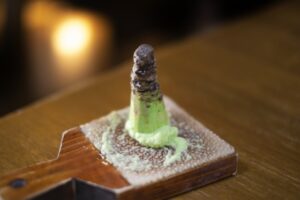
Traditional oroshi graters include sharkskin boards prized for ultra-fine paste; high-quality ceramic or fine-tooth plastic also works well.
Avoid pressing hard—let the grater do the work to achieve a fine, glossy cream.
Timing matters: The best flavor peaks within minutes of grating. Prepare only what you’ll eat and refresh as needed.
Pairing tips: Serve alongside sashimi and nigiri, or place directly on the fish (rather than mixing into soy) to preserve aroma.
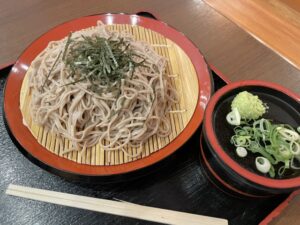
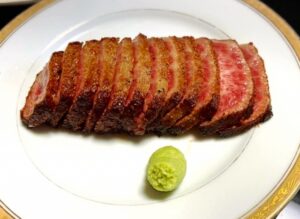
It also complements soba, chilled tofu, roast beef, fatty pork, and even creamy cheeses where the clean heat cuts richness.
Creative Ways to Use Wasabi
- Wasabi soy dip: Stir a small amount into soy sauce; keep it light to avoid drowning the aroma.
- Wasabi mayo: Blend with mayonnaise for sandwiches, karaage, or fries.
- Dressings: Whisk into vinaigrettes for salads or cold noodle bowls.
- Meat & seafood: Add a touch to steak, pork cutlets, or grilled fish to lift fattiness.
- Surprising pairings: Try with avocado, cream cheese, or cucumber for fresh contrast.
Real Wasabi, Fake Wasabi—Which Should You Use?
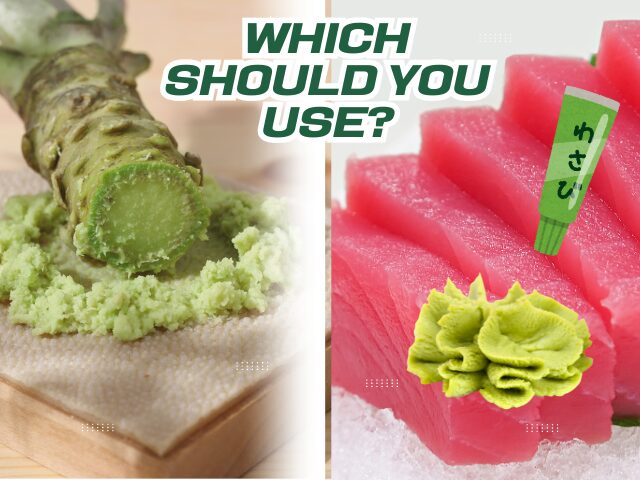
For everyday meals, substitutes are perfectly practical—affordable, available, and consistent. But when you want to savor nuance, fresh real wasabi is transformative: a brief, elegant heat that highlights rather than overwhelms.
If you’re curious about wasabi’s background and cultural roots, read our broader overview here: Wasabi: History, Culture, and the Science Behind Japan’s Iconic Spice.
Conclusion
Wasabi is more than a “hot green paste.” It’s a window into Japan’s relationship with freshness, texture, and restraint.
Understanding the difference between real and fake wasabi helps you choose the right option for the moment—practical substitutes for everyday use, and authentic hon-wasabi when you want a pure, fleeting burst of flavor.
The next time you enjoy sushi, take a moment to ask: is this the real thing?

